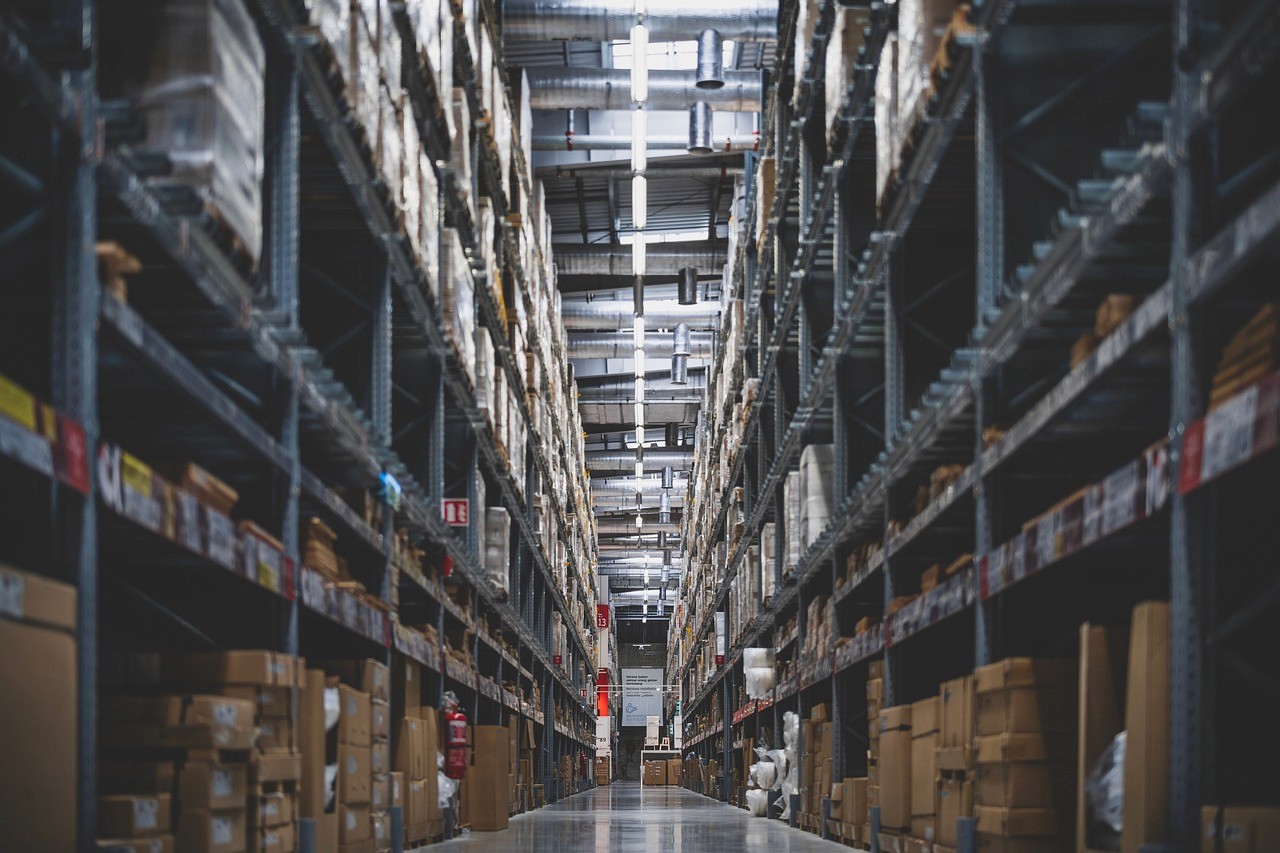How to Remove Shipping Information from China on Shopify
Jul 10, 2024

When you ship from China, you may notice that the tracking information reads ‘Mainland China, CN, Arrived at origin facility.’
From a customer’s perspective, that’s not always a good look on you, and we get it. Customers often have better trust for domestically shipped products and treat international ones harshly.
In this comprehensive guide, we walk you through removing shipping information from China from your Shopify store so your product can speak for itself without its origin butting in rudely.
Why hide shipping information from China?
There are some big pluses when you can keep your China shipping details under wraps:
Customers won’t know the product came from China
Something about shipping a domestic product inspires a sense of control in the average customer.
They won't worry about long shipping times, think the product might get stuck in customs or worry that they might receive a bad product.
No “Made in China” Label
While China is a manufacturing powerhouse, making up 29% of global manufacturing (the highest share), there are still some reservations about items originating from there.
Some folks still think Chinese products are cheap or not great quality. By hiding this, your products get a fair chance to impress on their own.
It gives the ‘local’ vibe
When customers think the product is shipping from nearby, they often feel better about buying it. There’s a feel good vibe they get from supporting local businesses and buying from a familiar face.
They might expect faster deliveries and better customer service too.
More wiggle room on prices
Without worrying about the ‘Made in China’ effect, you have more freedom to tweak prices to reflect how premium your product is.
In the next section of this blog post, we’ll show two distinct ways to hide all tracking information related to China:
Option 1: Use shipping apps on Shopify
Of course, there’s an app for hiding tracking information.
Like everything else on Shopify, there’s an app designed to optimize every process — including discreet shipping.
We’ve been around the block for a while and can confidently tell you that the standout apps to trust when it comes to hiding tracking information are ParcelPanel and Rush.App.
Parcel Panel
ParcelPanel positions itself as an all-in-one solution for managing the post-purchase experience. It helps e-commerce businesses streamline their operations, reduce customer service inquiries, and potentially increase sales through improved customer satisfaction and loyalty.
The platform emphasizes ease of use, quick setup, and 24/7 customer support. It also integrates with 1,200+ shipping carriers.
With 3k+ positive reviews, ParcelPanel is easily one of Shopify's most preferred order-tracking software.
How does it work?
ParcelPanel has a dropshipping mode that can help you hide Chinese origins.
To use this feature, follow these steps:
Step 1
Go to ParcelPanel admin → Settings → Dropshipping mode → Enable this feature.
Once the dropshipping mode is enabled, you can hop on to the next step.
Step 2
After enabling dropshipping mode, a new batch of settings on the Trackings Page tab will be automatically activated, allowing you to make changes.
You’d be allowed to hide certain options like carrier name and logo. You may also hide keywords like China and Aliexpress.
Alternate option:
You can manually translate tracking details and input the address you want to display in the ‘After translation’ section.
Source: The best for Dropshipping (parcelpanel.com)
Rush.App
Rush is a post-purchase automation solution designed for e-commerce platforms. Its primary focus is streamlining shipment tracking and enhancing customer communication.
This tool mainly benefits dropshippers, brand stores, and Shopify merchants looking to improve their post-sale processes and customer satisfaction rates.
Rush offers real-time shipment tracking across all carriers at its core, presenting this information on customizable, branded tracking pages.
The system keeps customers informed through various channels, including SMS, email, and push notifications, significantly reducing the likelihood of inquiries about order status and potential chargebacks.
How Rush works
Rush also offers the same powerful feature to modify the displayed country of origin on your shipments.
According to their Help Center, here’s a step-by-step guide on how to remove/change the shipping information from China:
You can replace a location with:
Empty location
Another City
For an empty location of your choice:
Select Apps from the navigation sidebar on the left of the Shopify page.
From the list of installed apps, select the Rush app.
Select the Shipments from the navigation sidebar on the left and then choose Blacklisting.
Check the ‘Change locations mentioned in message’ box in the Replace locations subsection.
Select the option Empty location.
Add a Country or region to be replaced
Save the changes
For another city:
Follow the same steps till you get to the fourth one. From there, do the following:
In the Replace Locations section, select Another City.
In the field Country or region to be replaced, select the country name(s) or region to be replaced on the tracking page.
Similarly, in the field Search and replace with country or region, select the country to be replaced. For example, in the image above, China will be replaced with Paris, France.
Rush also has an option to remove the shipping information for a whole region. So, if you select Asia, all countries located in Asia on your tracking page will be replaced with the selected country.
Here’s a sample of what the result looks like:
Before:
After:
Option 2: Use last-mile delivery carrier’s label on the parcel
While shipping apps offer a digital solution to eliminating shipping information, last-mile tracking provides a much more physical touch — the best kind, if you ask us.
What is Last Mile Tracking?
In e-commerce, last-mile tracking is generally defined as the sort of tracking that happens at the final stage of the delivery process—from the local distribution center to the customer.
But it means something a bit different now. In this context, last-mile tracking involves using a local carrier's shipping label directly on the parcel while packing in the ShipSmartly China warehouse.
Instead of a label that screams "Made in China," your package sports the branding of a familiar domestic carrier—USPS, AusPost, Canada Post, DHL, or another trusted name.
You’re probably wondering if getting a local tracking number that doesn’t trace back to China will be an issue. It isn’t.
We’ll get the local tracking number, and your tracking details and history will be updated on Shopify — without hinting at China.
The last-mile tracking process
We typically handle attaching the local carrier's shipping label through these steps:
Step 1
Warehouse finishes the picking & packing process.
Step 2
Warehouse places a local carrier’s shipping label directly on the parcel.
Step 3
The parcel is delivered to the Chinese cross-border carrier.
Step 4
Chinese Carrier moves parcel to the next flight schedule without replacing the shipping label.
Voila! The parcel appears in the recipient's country without revealing anything about its Chinese origins. The tracking history will only display the parcel’s journey within the recipient country.
Benefits of the last mile tracking label
Last mile tracking is of great benefit to Shopify brands who prefer a much more standard approach to discreet shipping.
The process is watertight and easily the most convincing option.
The customer gets the domestic shipping experience
Potential customers are often converted or lost on the altar of convenience. A tiny stressful feeling can sometimes be enough to dissuade the online customer, especially in a world with a million competitors.
Something about domestic shipping just spells convenience. It is generally perceived as faster, less expensive, and less burdensome on the planet.
While domestic shipping can be all those things, customers will still bypass all that for a good enough product. And that’s what the last mile tracking label helps you do well.
It helps you glide around those biases so you can present a great product — one that the customer will ultimately prefer and trust. Plus, it reduces concerns about international shipping delays or customs issues.
No tracking records related to China
With last-mile tracking, no visible data linking your product to China exists in the tracking record.
That’s enough to eliminate any stigma associated with the product, reduce customer inquiries about product origins, and avoid any negative impact from geopolitical tensions.
If your brand’s reputation is built on local-ness, this should also help you maintain a good brand image.
Fast-tracking updates (less than 24 hours)
No need to fret about delayed tracking updates for your customer.
With last-mile tracking, the updates are almost instantaneous.
Once the parcel is dispatched from the Chinese carrier's sorting center, the tracking information will show updates like:
'Picked Up By Shipping Partner, USPS Awaiting Item' within 24 hours.
One look at this information, and the customer is convinced that the product is shipped from the United States.
Cons of last-mile tracking
Last-mile tracking does come with a few drawbacks:
Limited availability
We only use (from our warehouse) shipping labels from local carriers in the US, UK, Canada, Australia, and Germany.
High cost
It’s a bit more expensive than first-mile tracking options, which can impact your profit margin, especially for low-value goods.
Wrap Up
So we’ve learned that hiding shipping details from China is totally doable. And it's not just a cool trick – it's a smart move that can make your brand look better and keep your customers happier.
You've got two main ways to do this:
Use apps like ParcelPanel and Rush.App. These are like digital makeovers for your shipping info.
Try last-mile tracking labels. This is like giving your packages a domestic outfit right from your Chinese warehouse.
By doing this, you're making it easier for people to buy from you. You're giving them a smooth, familiar shipping experience.
This lets your products shine on their own, without any worries about where they came from.




